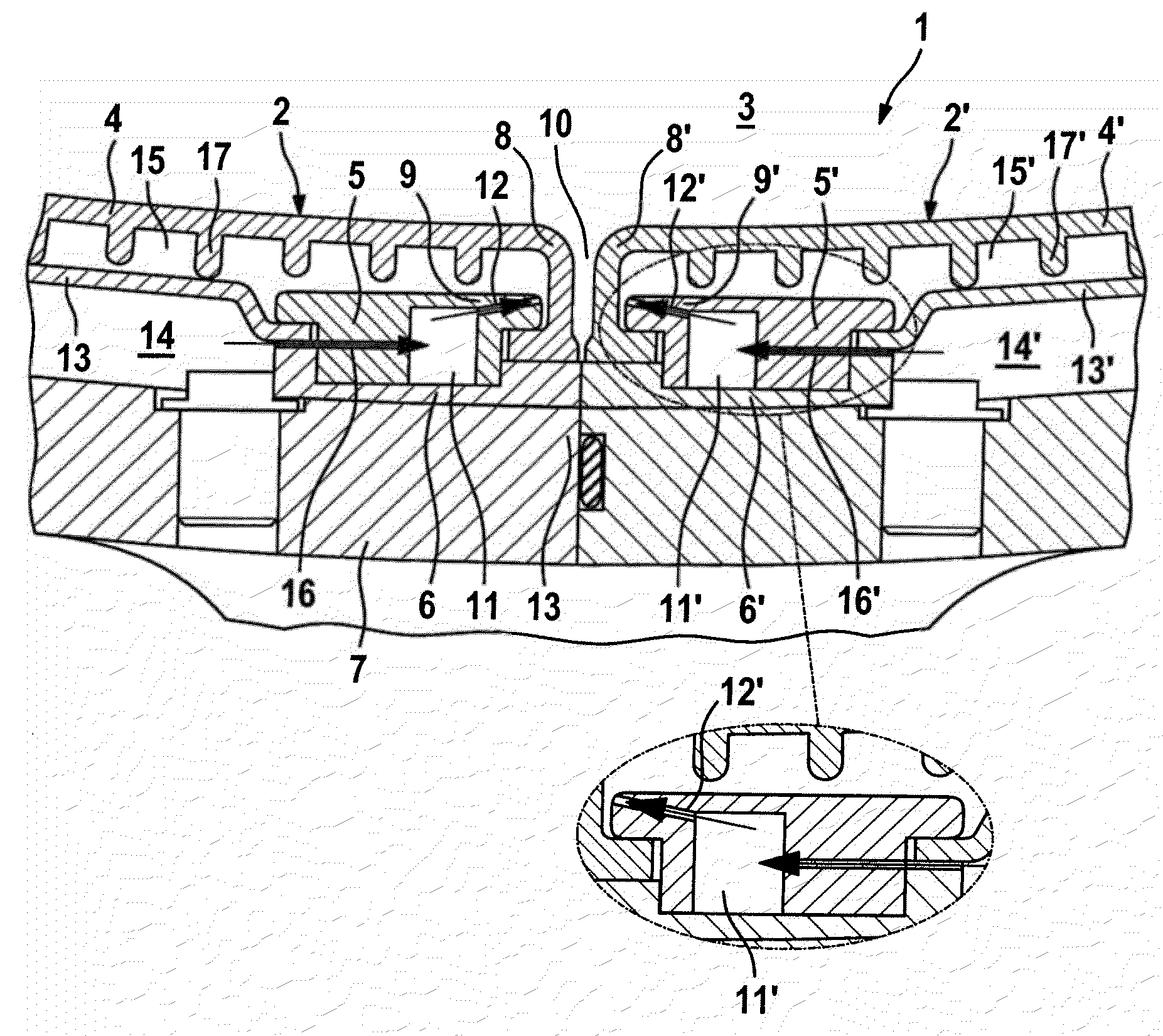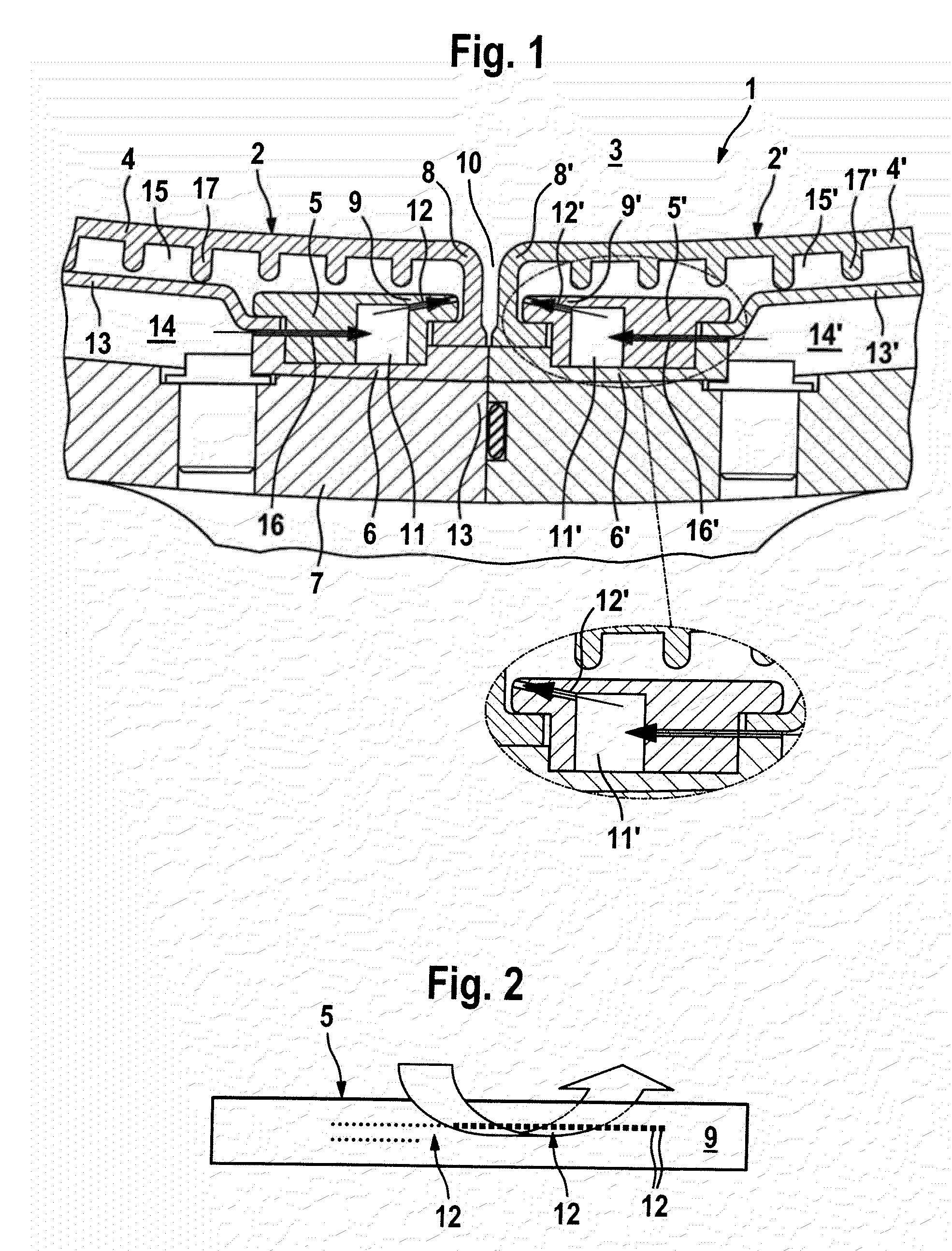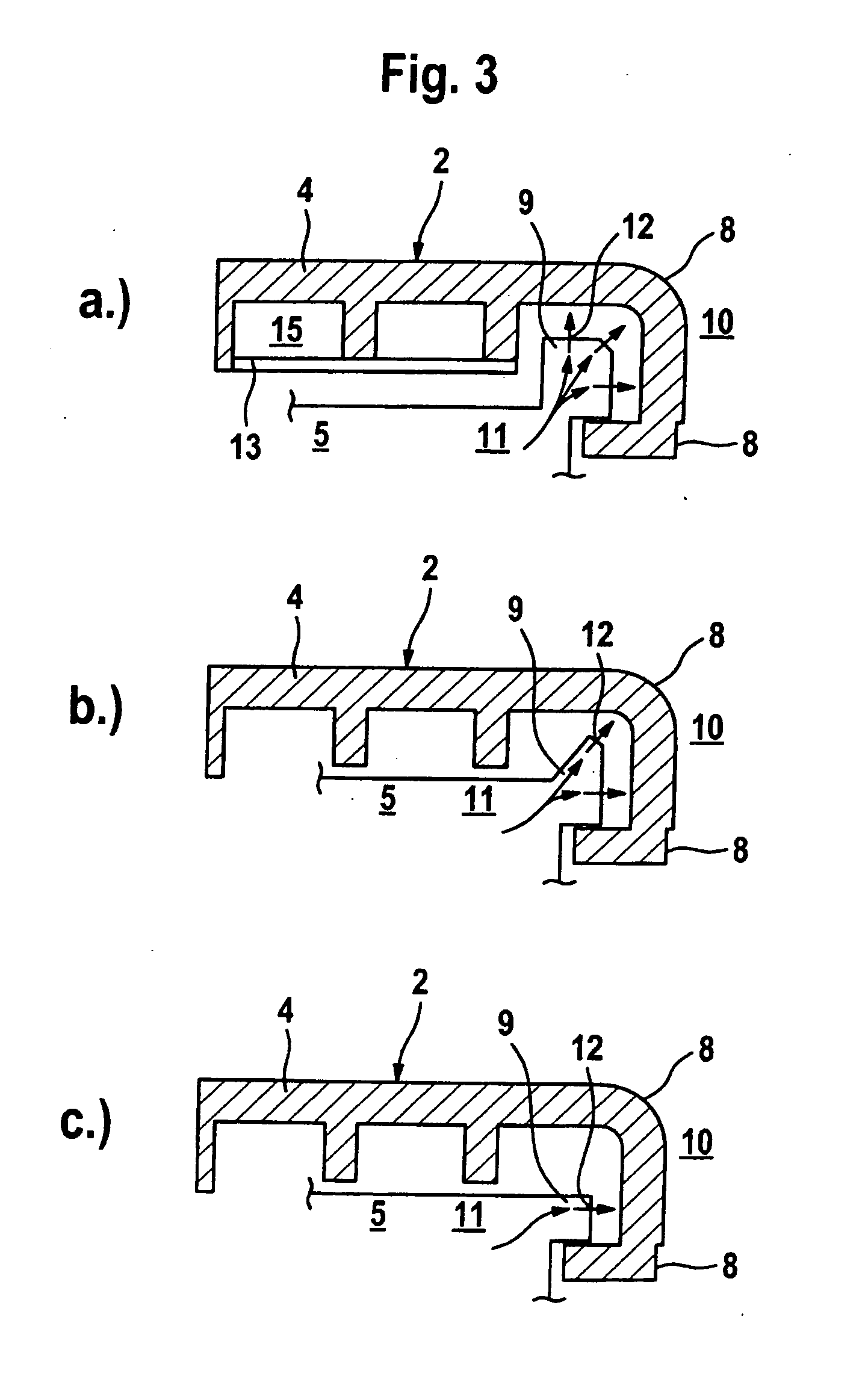[0006]The invention is based on the general idea of designing a heat shield, which has at least two segments, with internal cooling passages so that locally variable cooling inside a segment is possible. In general, each segment in this case has a liner element, which faces a combustion space, and a retaining device, wherein the liner element is directly exposed to the hot gas flow and is fastened on a support structure via a support element. On the other hand, the retaining device, the liner element and the support element are fixed on the support structure. On the edge side, each liner element has an edge region which fits under a
flange region of the retaining device which forms it. In this case, the individual segments are arranged next to each other so that a gap for
thermal expansion, which is open towards the
combustion chamber and into which hot gas can penetrate, remains between the edges of two adjacent liner elements. Therefore, in the case of the combustion chamber according to the invention it is provided that the retaining device together with the support element forms a first cooling passage in which flows cooling gas for cooling the liner element. For cooling the edge regions of the liner elements which face the gap, the retaining device, in the region of its flange region, has through-openings through which cooling gas flows from the first cooling passage to the edge region which is to be cooled and, depending upon configuration of the through-openings, enables a locally increased or decreased cooling of the edge region. Since the liner elements in the region of the gap do not completely reach as far as the support element or the support structure, hot gas which has penetrated into the gap can lead to an impairment of, or damage to, the support elements or the support structure. In order to counteract this, the through-holes are provided, which enable a calculated guiding of cooling gas from the first cooling passage to the edge region to be cooled, and as a result creates a requirement-oriented, locally defined cooling. As a result of the locally adapted cooling according to the invention, damage to, or impairment of, the support elements or the support structure can be avoided and consequently the service life of the combustion chamber can be increased. At the same time, maintenance cost is reduced, and as a result, lowering the operating costs can be achieved.
[0007]In an advantageous embodiment of the solution according to the invention, a distance between two through-openings, and / or a
diameter of the through-openings, is adapted to a local cooling requirement. In the case of a high cooling requirement, it is therefore conceivable that a relatively small distance between two adjacent through-openings is selected, and / or a relatively large
diameter of the through-openings is selected, whereas in the case of a rather low cooling requirement a larger distance between two through-openings can be selected, or a smaller
diameter of the through-openings can be selected. This individual
adaptation allows a requirement-oriented cooling of locally variably temperature-stressed regions and as a result also allows an improvement of the efficiency of the turbine since there are no excessively cooled regions which unnecessarily cool the hot gas flow.
[0008]One embodiment, in which an inner liner element is provided between the support structure and the liner element, and which together with the support structure forms a second cooling passage, or in which the liner element together with the inner liner element forms a third cooling passage, is especially advantageous. Such splitting into a plurality of cooling passages inside the heat shield allows an even more accurate controlling of the cooling of the heat shield, wherein the cooling gas first flows through the regions which are to be cooled more intensely, and then, after proportionate
warming up, cool the regions which are to be cooled less intensely. As a result of this, cooling which is especially effective and also adapted to the necessary cooling requirement in each case can be carried out.
[0009]In a further advantageous embodiment, the pressure in the second cooling passage is greater than in the first cooling passage, and in the first cooling passage the pressure is greater than in the third cooling passage. As a result of this pressure drop, a controllable cooling flow can be created which, on account of the
pressure difference, flows automatically through regions which are to be cooled in each case, and as a result saves a costly controlling of the cooling flows. The
pressure difference between the individual cooling passages in this case can be controlled via a flow cross section of connecting passages which connect the individual passages, as a result of which influence can be brought to bear on the flow velocity at the same time.
 Login to View More
Login to View More  Login to View More
Login to View More 


